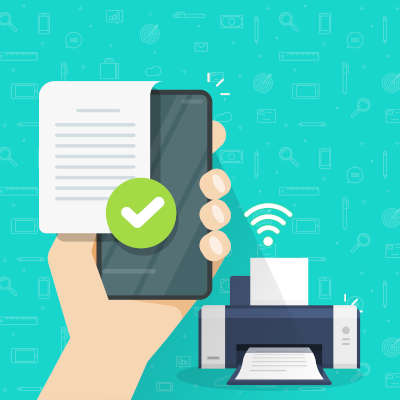Tip of the Week: Securing Your Business’ Wireless Printers
When you consider the security concerns in your office, you may not think to include your printers in your deliberations. You should, simply because your printers could be an access point into your network without the right protections. That’s why, for this week’s tip, we’re going over how to improve the security around your printing infrastructure.
How Can Your Printer Be a Threat?
There is no shortage of ways your printer could be used against your organization if it is left unsecured. The data stored on the printer itself can be harvested or tampered with, print jobs can be routed or replicated to a different device, and we can’t forget the possibility that a completed print job can be taken off the printer by anyone. Your printers themselves can be taken over and used to attack the very network they connect to. Wi-Fi signals sent to the printer can be intercepted.
There is undoubtedly a lot of risk involved with using printing solutions in your business, but there are also undeniable benefits that make it impossible to just abandon their use. So, what is a business to do?
The answer to that question is simple: follow a few best practices that can mitigate these security risks.
Protecting Your Printers
In order to secure your printing infrastructure, the following best practices will need to be followed:
- Update your printers regularly. Responsible manufacturers will periodically release software updates to resolve security issues as they are discovered. Of course, to be protected, you need to actually take advantage of these updates.
- Use access controls to protect your printers. Before someone can use your printer, they should have to confirm that they are authorized to do so by providing the proper credentials—just as they should have to do if they are to do anything on your network.
- Require multiple authentication requirements. Multiple factors are better than one to ensure someone is who they say they are, so using multi-factor authentication on your printing devices will keep them safer.
- Deactivate what you don’t use. Many modern printers come with additional functions that connect to your network. Make sure you remove any you don’t use to reduce the number of potential access points that leave you vulnerable.
At COMPANYNAME, we are dedicated to improving the cybersecurity of our clients in any way we can. To learn more about keeping your business technology secure, reach out to our team by calling PHONENUMBER.



